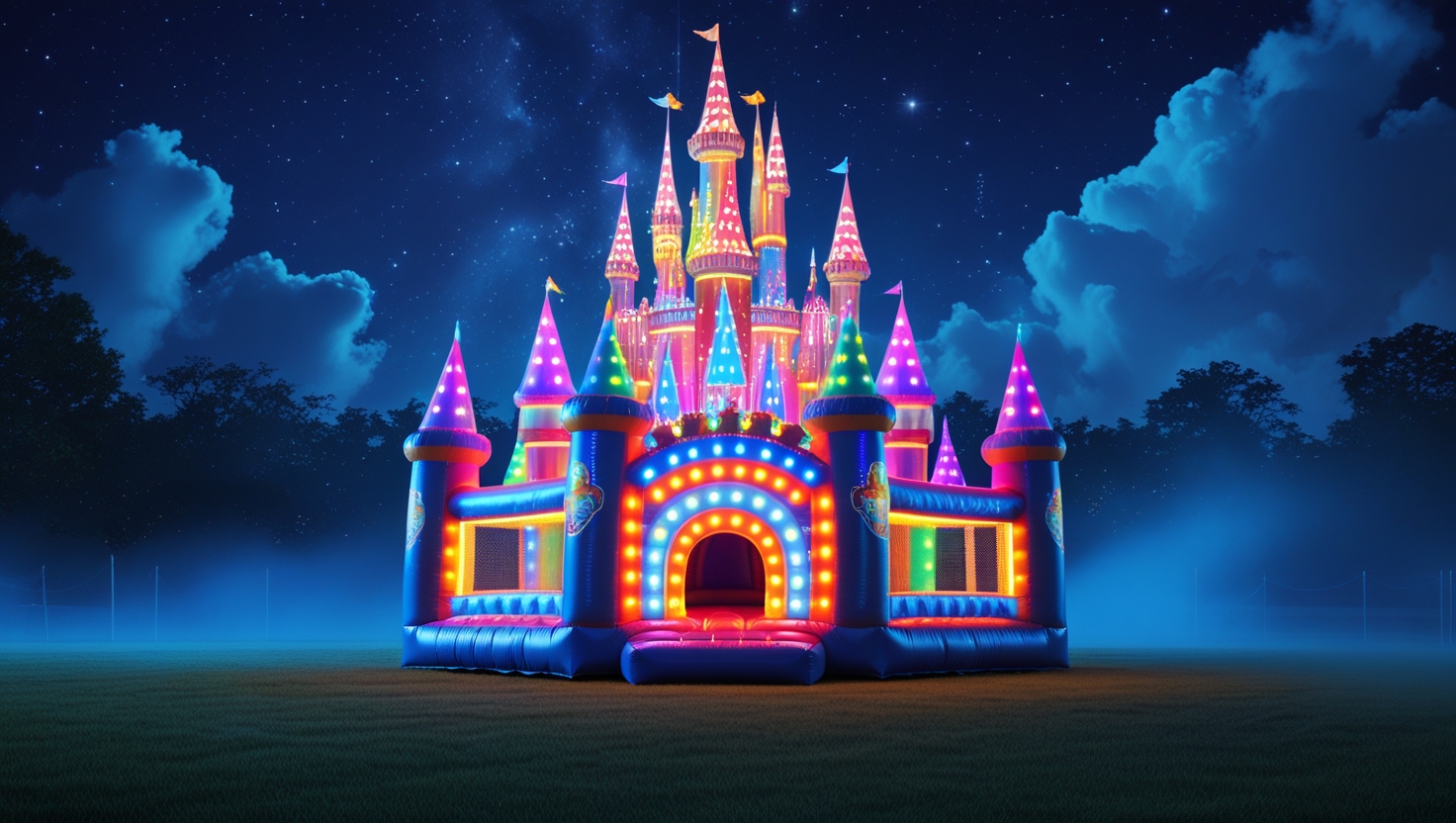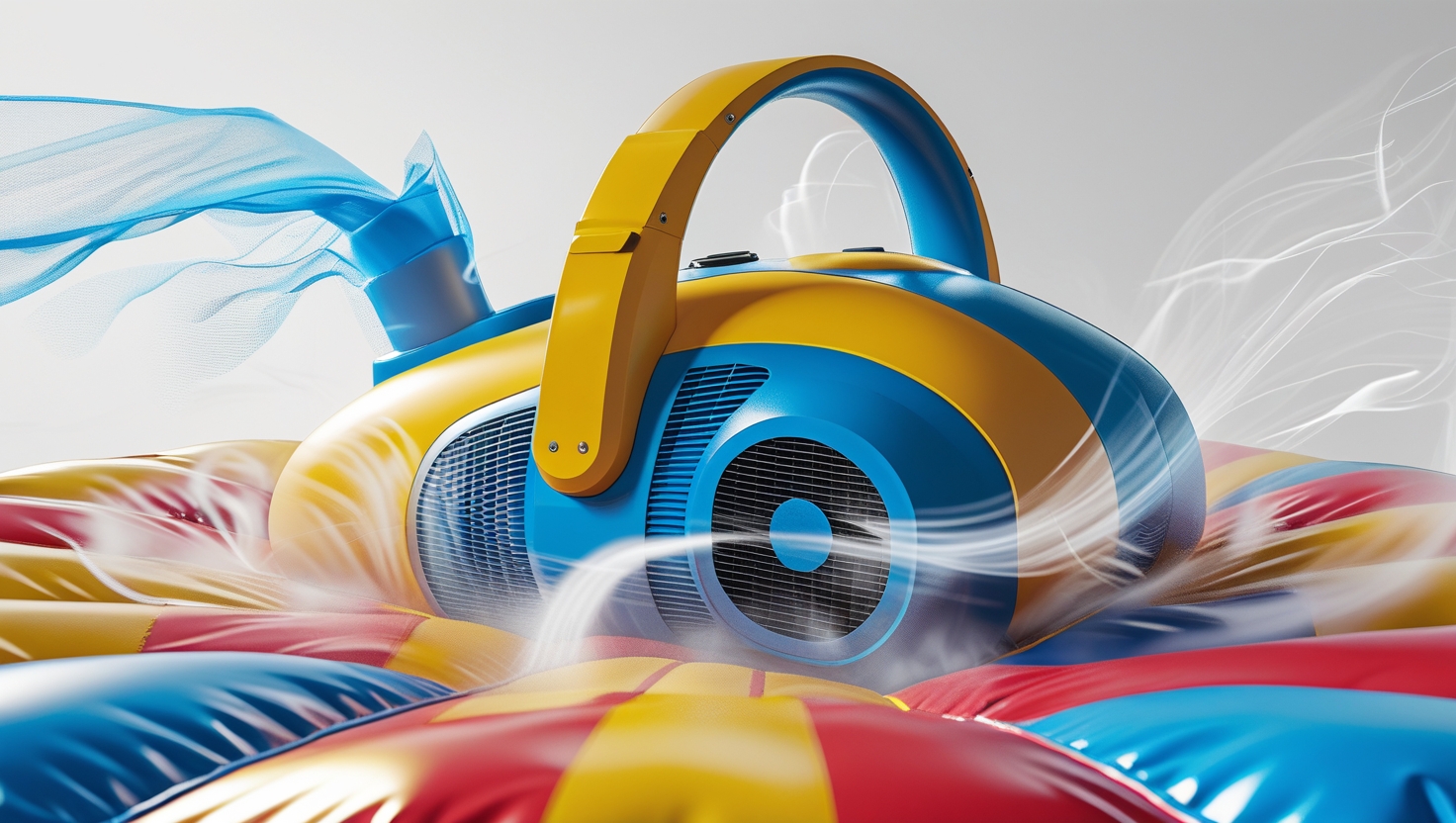
All you want to know about us
Click here to share this article

Bouncy castles, also known as inflatable castles or bounce houses, provide hours of entertainment for children and adults alike. These structures operate using a combination of air pressure, durable materials, and continuous airflow to create a safe and bouncy play environment. In this article, we will explore the mechanics, materials, and safety features that allow bouncy castles to function effectively.

The Science Behind Bouncy Castles
At their core, bouncy castles rely on air inflation and pressure balance to maintain their structure. When air is continuously pumped into the inflatable, it creates internal pressure that keeps the castle upright and firm while still allowing for the characteristic bounce. This effect is achieved through inflatable chambers, air circulation, and controlled leakage.
Air Inflation and Blower Systems
Bouncy castles require a constant air supply to remain inflated. This is accomplished using electric blowers, which work as follows:
Continuous Airflow: Unlike sealed inflatables such as balloons, bouncy castles operate on a continuous airflow system, meaning air is constantly pumped in while small amounts escape through seams and fabric pores.
Blower Power: The size and power of the blower determine how quickly and effectively the structure inflates. Most standard bouncy castles use 1.0 to 2.0 HP (horsepower) electric blowers to maintain optimal inflation.
Air Intake and Exhaust: The blower pulls in external air and forces it into the inflatable, creating positive pressure inside. Small openings in the fabric allow air to escape at a controlled rate, preventing overinflation.
Material and Structural Design
Bouncy castles are crafted from heavy-duty, puncture-resistant materials that ensure durability and safety. The most common materials include:
PVC (Polyvinyl Chloride): A strong and flexible material resistant to wear and tear.
Nylon: Lightweight but strong, often used in smaller inflatables.
Vinyl-Coated Polyester: Commonly used for commercial-grade bounce houses due to its enhanced durability.
The structure of a bouncy castle consists of several interconnected inflatable chambers that distribute air evenly. Reinforced seams and double-stitched areas provide additional stability.

How Weight and Pressure Affect Bounciness
The bouncy effect of these castles is achieved through a balance between air pressure and external weight. When someone jumps on the surface:
The impact compresses the air inside the chambers.
The material pushes back against the force of gravity.
The elasticity of the fabric, combined with the internal air pressure, allows the jumper to rebound.
The degree of bounce varies depending on air pressure levels, the material's elasticity, and the number of users on the inflatable.

Safety Mechanisms in Bouncy Castles
Safety is a crucial component in the design of bouncy castles. Manufacturers incorporate several features to minimize risks:
Anchoring and Stability
Stakes and Sandbags: Large bouncy castles must be secured using ground stakes or weighted sandbags to prevent movement.
Wind Resistance: Many inflatables include wind guidelines, ensuring safe operation in moderate weather conditions (typically under 15-20 mph winds).
Pressure Regulation and Venting
Relief Valves: Some inflatables have built-in relief valves to prevent overinflation and excessive air pressure buildup.
Mesh Sides and Entrances: These prevent users from falling out and improve visibility for supervisors.
Age and Weight Limits
Maximum Capacity Ratings: Every bouncy castle comes with specified weight and user limits to avoid structural strain.
Age Recommendations: Different models are designed for specific age groups, ensuring appropriate bounce levels and safety.

Types of Bouncy Castles
Bouncy castles come in various shapes and sizes, catering to different event types and age groups. Some of the most common types include:
Classic Bouncy Castles
These feature a simple square or rectangular shape with walls and an open bounce area. They are suitable for kids' birthday parties and community events.
Obstacle Course Inflatables
Designed for interactive play, these include tunnels, climbing walls, and slides. They are often used in team-building events and competitive play.
Slide-Integrated Inflatables
Some models incorporate water slides or dry slides, adding an extra layer of fun. These are popular for summer parties and outdoor festivals.
Themed Bouncy Castles
Many manufacturers offer customized inflatables featuring popular themes, characters, or colors to match specific events.

Maintenance and Longevity of Bouncy Castles
Proper maintenance ensures the longevity and safety of bouncy castles. Key maintenance steps include:
Regular Cleaning
Use mild detergent and water to clean surfaces.
Avoid harsh chemicals that may weaken the fabric.
Inspection and Repairs
Check for tears and punctures before and after each use.
Use vinyl patches or repair kits to fix small damages.
Proper Storage
Ensure the inflatable is completely dry before folding and storing to prevent mold growth.
Store in a cool, dry place away from direct sunlight to prevent material degradation.

Conclusion
Bouncy castles function through a carefully balanced system of air pressure, durable materials, and safety mechanisms. The continuous airflow from an electric blower keeps the structure inflated, while reinforced fabric ensures stability and elasticity. With proper setup, maintenance, and adherence to safety guidelines, bouncy castles provide a safe and exhilarating experience for children and adults alike.